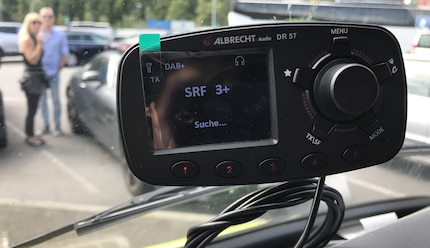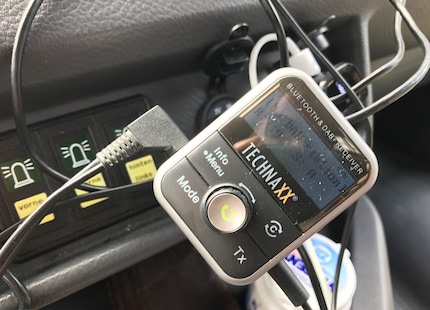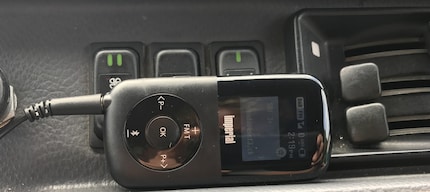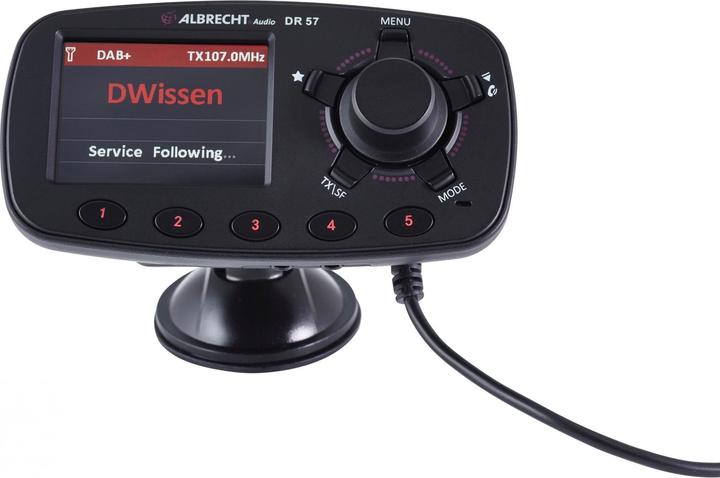

I tested it: going on holiday with three digital radios and an old van
During my holiday, I had the opportunity to test three DAB+ radios extensively. The engine noise from my old fire engine put all three to the test.
I bought an old fire engine that had been running for 25 years and converted it into a motorhome. It was about time I gave it a long drive, and I wasn't going to skip out on the music. Given the noise of the engine under my buttocks and the ambient noise level, I needed good audio quality. As I hadn't installed a car radio and my roaming data was limited, I opted for a DAB radio, three models to be precise.

Please note: in the following, "DAB" always refers to the current DAB+ standard. Forget the original DAB without the "+", it's already obsolete.
How it works
These little devices receive DAB+ signals and transmit them as FM waves to your already built-in car radio. The transmission power is limited to a very small radius so that other drivers are not disturbed. The receivers also have a headphone output to which you can plug a cable and connect to the car radio if you have an AUX output. This connection is better and less prone to interference than the FM variant, as the signal is not converted into an analogue radio signal.
Since I don't need a car radio, a UE Megaboom acts as my sound system. I connected the receivers using a cable.
I tested the following three DAB+ receivers:
The devices come with extra features such as a hands-free kit, FM radio or SD card readers for MP3 files. The defining aspect of my test was the performance of DAB+ in my car.
Reception
I tested the receivers simultaneously at a speed of 95 km/h - I could have gone faster, but it would have been really noisy. In Italy, all three devices gave me problems, as DAB+ is not yet widespread. The situation is much better in Switzerland, and will certainly continue to evolve.
The Albrecht and Technaxx sets both have an antenna that you stick to the socket protector. Imperial's has a flexible antenna.
All in all, the Albrecht and Technaxx devices have an antenna that you stick to the socket guard.
On the whole, the quality of reception from the Imperial and Albrecht models was similar, while the signal from the Technaxx generally disappeared more quickly. Back in German-speaking Switzerland, once through the Gotthard tunnel, only the Imperial found the transmitters automatically. I could rarely count on reception in tunnels and under bridges.
The screen
The sun's rays always put the screens to the test. Only Albrecht's device convinced me. Unlike the other two, its display colour is adjustable, which is very useful when it comes to contrast. The Imperial was designed more as a replacement for MP3 players; in fact, it's the only one with a built-in FM receiver. It can also send audio signals to my UE Megaboom via Bluetooth. Its screen is as small as that of an MP3 player. No problem when I have it in my hand, but once it's on the dashboard, I can't see much...
The Technaxx's screen is difficult to read in bright sunlight or when looking at it from the sides. Its rigid gooseneck prevents me from orienting it the way I want.

The fixings
Albrecht supplies a suction cup mount to which its device can then be attached using a magnet. This system is very flexible and well thought out. The gooseneck-style mount on the Technaxx plugs directly into the cigarette lighter. Depending on where the socket is located, this type of attachment can be very problematic, as it is not at all flexible. The Imperial has no attachment, despite what the packaging illustration suggests. When I walk away, the screen becomes indecipherable anyway.

Usability
For me, the deciding factor was manoeuvrability while riding. The Albrecht is clearly the easiest to handle; its display is clear. Unlike the Technaxx, both the Albrecht and the Imperial allow you to save favourites. This is an important criterion for me. On the Albrecht, I can customise shortcut keys, whereas the Imperial requires me to go through the main menu.

The FM transmitter
The Technaxx had the lowest transmitting capacity, while the other two had no problems. This is important because other transmitters may be on the selected FM frequencies. If the device's transmitting capacity is too low, it can interfere with the transmission of its own FM transmitters. The Technaxx and Albrecht have a separate button (TX) with which you can change their transmission frequency. The Imperial forced me to go through the menu.
To summarise
The receiver from Albrecht: good finish and reception, simple and clear. It is perfect for those who want a good digital receiver without frills. It does exactly what it was designed to do.
The **Imperial:**good receiver with useful extra features such as an FM receiver and music streaming via Bluetooth. It comes with a battery, so feel free to take it with you wherever you go. It was designed to be portable, not to be placed in a car, otherwise its screen would be bigger, and its controls more direct.
The receiver from Technaxx: It has several gadgets: hands-free kit, connection with your smartphone to play music and built-in MP3 player. It can do lots of things, but it doesn't excel at anything.
As a trained multimedia electronics engineer, I love to solve problems. But technology should be fun and not a crutch. I own a consulting firm in the field of audiovisual production environments.

